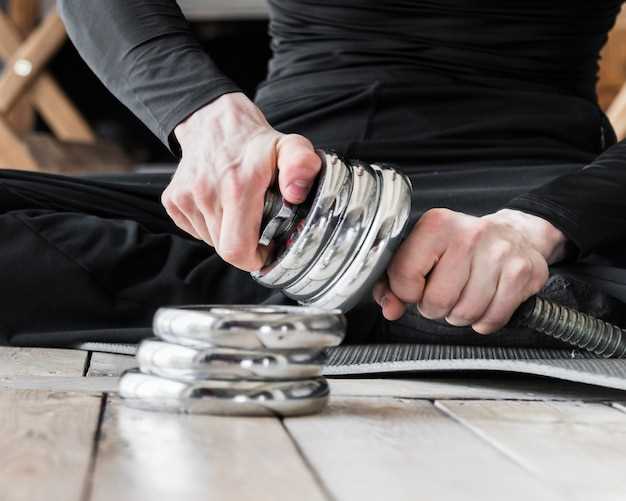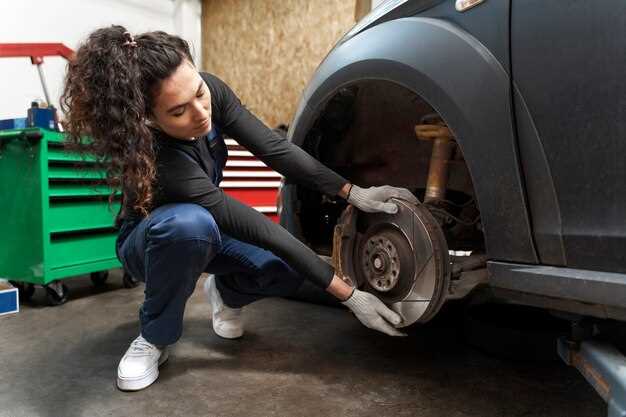
The suspension system of a vehicle plays a crucial role in determining its handling, stability, and overall driving experience. By improving the suspension, you can significantly enhance not only the comfort of your ride but also the precision with which your car responds to steering inputs. Understanding the various components and adjustments available will empower you to make informed choices that cater to your specific driving needs.
Upgrading the suspension system involves several key elements, including the choice of springs, shock absorbers, and sway bars. Each of these components contributes to the vehicle’s ability to absorb bumps, maintain tire contact with the road, and reduce body roll during cornering. Modern advancements in suspension technology have made it easier for car enthusiasts to customize their suspension setups for optimal performance.
Whether you are an avid racer seeking maximum grip on the track or a casual driver wanting a smoother highway experience, recognizing the importance of suspension enhancements is vital. With the right modifications, you can achieve superior handling performance that not only enhances your driving enjoyment but also ensures safety and control in various driving conditions.
Choosing the Right Suspension Type for Your Vehicle
Selecting the appropriate suspension type is crucial for achieving optimal handling performance in your vehicle. Different types of suspension systems cater to various driving needs, terrain, and vehicle designs. Understanding these options will allow you to make an informed decision that enhances your driving experience.
The most common suspension types include MacPherson strut, double wishbone, multi-link, and solid axle. Each design offers distinct advantages. For instance, MacPherson struts are widely used in compact cars due to their simplicity and cost-effectiveness. They provide adequate handling but may not excel in high-performance applications.
In contrast, double wishbone suspensions offer better control and stability, particularly during cornering. This system allows for independent wheel movement, reducing body roll and enhancing grip. It’s often found in sports cars and high-performance vehicles where precise handling is essential.
Multi-link suspensions take this a step further, providing a combination of comfort and performance. This design can adapt to various driving scenarios, making it ideal for luxury vehicles and SUVs. It offers superior handling dynamics while ensuring passenger comfort.
Solid axle suspensions are primarily used in trucks and off-road vehicles. They deliver high durability and stability, particularly when traversing rough terrain. However, they may compromise on ride comfort and handling precision compared to independent options.
When choosing the right suspension type, consider your driving style and the vehicle’s primary use. If you prioritize sporty handling and quick response, opt for a performance-oriented system like double wishbone or multi-link. For everyday commuting with occasional rough road encounters, a MacPherson strut may suffice. For heavy-duty applications, particularly off-roading, a solid axle is typically the best choice.
Ultimately, the right suspension system depends on your specific needs. Assess factors such as comfort, handling, and the driving environment to select a system that enhances both performance and enjoyment.
Upgrading Shock Absorbers for Improved Response
Upgrading shock absorbers is essential for maximizing vehicle handling and performance. Improved response from shock absorbers contributes significantly to better stability, control, and comfort during driving.
When considering an upgrade, several factors come into play:
- Types of Shock Absorbers:
- Monotube: Provides better heat dissipation and consistent performance under extreme conditions.
- Twin-tube: Offers a softer ride, ideal for daily driving yet still effective for spirited driving.
- Adjustable: Allows customization of damping characteristics for a more tailored driving experience.
- Spring Rates: Ensure compatibility with the chosen shock absorbers for optimal performance. Stiffer springs can enhance handling but may sacrifice ride comfort.
- Quality of Materials: Look for shock absorbers made from durable materials to withstand wear and tear in different driving conditions.
- Installation: Professional installation is recommended to ensure precise alignment and functionality, maximizing the benefits of new shock absorbers.
The benefits of upgraded shock absorbers include:
- Enhanced Handling: Improves cornering stability and response during maneuvers.
- Better Ride Comfort: Reduces unwanted vibrations and harshness on the road.
- Increased Safety: Provides improved traction and control, especially in adverse weather conditions.
In conclusion, upgrading shock absorbers is a critical step toward enhancing car suspension for superior handling performance. Selecting the right type and ensuring proper installation can significantly elevate both driving enjoyment and safety.
Adjusting Ride Height for Optimal Center of Gravity
Adjusting the ride height of a vehicle is a crucial aspect of enhancing its handling performance. The center of gravity (CG) plays a significant role in determining how well a car responds during cornering, acceleration, and braking. A lower ride height generally brings the center of gravity closer to the ground, which can lead to improved stability and reduced body roll in turns.
Reducing the ride height alters the distribution of weight across the vehicle, stabilizing its dynamics. By lowering the CG, a car experiences less centrifugal force during cornering, making it more predictable and easier to handle. However, striking the right balance is essential; excessively low ride height can negatively impact the suspension’s ability to absorb shocks and maintain traction on uneven surfaces.
When adjusting ride height, it’s important to consider the vehicle’s intended use. Racing and performance vehicles often benefit from a lower ride height for enhanced handling, while daily drivers may require a slightly higher setting to accommodate comfort and practicality. The adjustment process typically involves modifying coilovers or shock absorbers to achieve the desired height, allowing for a customizable approach to CG optimization.
Furthermore, adjusting ride height can also affect the alignment settings of the vehicle. Changes in height can alter camber and caster angles, which can impact tire wear and handling characteristics. Therefore, after adjusting ride height, a professional alignment is recommended to ensure optimal performance.
Ultimately, achieving the optimal ride height for the best center of gravity requires careful consideration of the car’s design, driving conditions, and performance objectives. By strategically lowering the ride height, drivers can enhance their vehicle’s handling, making for a more enjoyable and controlled driving experience.
Selecting Appropriate Springs for Performance Handling
Choosing the right springs is crucial for enhancing a car’s handling performance. Springs significantly influence ride height, comfort, and cornering stability. Two main types of springs are commonly used: coil springs and flat springs. Each type has its advantages and specific applications.
Coil Springs are predominant in modern vehicles due to their versatility. When selecting coil springs, consider spring rate, which refers to the stiffness of the spring. A higher spring rate improves handling by reducing body roll during cornering, but it may compromise ride comfort. Conversely, a lower rate enhances comfort but can lead to excessive body movement. Balance is key; therefore, aim for springs that provide the required stiffness without sacrificing ride quality.
Next, evaluate material composition. Most performance springs are made from high-carbon steel or chrome-silicon alloy, which offers durability and resistance to fatigue. Upgraded options, like titanium springs, provide weight savings without compromising strength, further enhancing overall performance.
Another important factor is spring length. Shorter springs lower the vehicle’s center of gravity, thus improving cornering performance. However, this modification may necessitate adjustments to the shock absorbers or struts to avoid bottoming out. Ensure compatibility with the vehicle’s suspension system to prevent mechanical issues.
Lastly, consider your driving style and typical conditions. If you frequently drive on track days, stiffer springs will suit aggressive handling preferences. For daily driving, opt for a more balanced spring that provides both comfort and performance. Additionally, it’s essential to match springs with appropriate dampers for optimal suspension performance.
In summary, selecting the right springs involves understanding spring rates, materials, lengths, and how these factors align with your driving needs. A thoughtful selection process can lead to significant improvements in handling performance, making your vehicle more responsive and enjoyable to drive.
Installing Sway Bars to Reduce Body Roll
Sway bars, also known as anti-roll bars or stabilizer bars, are essential components in enhancing your vehicle’s handling performance. Their primary function is to minimize body roll during cornering, allowing for improved stability and enhanced grip. When installing sway bars, several factors need to be considered to ensure optimal performance.
Firstly, selecting the right sway bar is crucial. Different vehicles have unique weight distributions and suspension geometries, making it essential to choose a sway bar specifically designed for your make and model. Aftermarket sway bars often come in various thicknesses and materials, affecting stiffness and performance.
Installation typically requires a few critical steps:
| Step | Description |
|---|---|
| 1. Gather Tools | Collect necessary tools such as wrenches, socket sets, and a jack. |
| 2. Lift Vehicle | Use a jack to lift the vehicle safely and secure it with jack stands. |
| 3. Remove Old Sway Bar (if applicable) | Detach the existing sway bar by removing the end links and mounting brackets. |
| 4. Position New Sway Bar | Align the new sway bar with the mounting points and attach it securely. |
| 5. Reattach End Links | Connect the end links to the sway bar and the control arms, ensuring proper fitment. |
| 6. Lower Vehicle and Test | Carefully lower the vehicle and conduct a test drive to assess improvements. |
After installing the sway bars, you can expect a marked reduction in body roll when cornering. This improvement not only enhances the driving experience but also increases confidence while navigating tight turns and uneven surfaces. Additionally, it’s important to note that adjusting the stiffness of sway bars can offer tuning options for various driving styles, from daily commuting to track racing.
Maintaining proper alignment after installation is crucial. A well-aligned vehicle ensures better performance and prolongs the lifespan of suspension components. Regularly inspect sway bars and mounting points for any signs of wear or damage to ensure continued performance.
Tuning Your Suspension Setup for Track and Street Performance
Tuning your car’s suspension for both track and street performance requires a careful balance between responsiveness, comfort, and stability. Here are essential aspects to consider:
1. Understanding Suspension Components
- Optimize damping rates to enhance handling while maintaining ride comfort.
- Springs: Choose the right spring rates to match your vehicle’s weight and intended use.
- Anti-Roll Bars: Adjust the thickness to control body roll and improve cornering stability.
2. Adjusting Ride Height
Lowering your vehicle’s ride height can improve aerodynamics and center of gravity. However, consider the following:
- Track Performance: Lowering enhances cornering by reducing body roll.
- Street Performance: Maintain a suitable height to avoid excessive scraping and improve comfort.
3. Setting the Alignment
Proper alignment is crucial for both track and street setups:
- Camber: Use negative camber for better grip on the track while keeping it close to zero for street driving.
- Toe: Slight toe-in enhances stability at high speeds, but adjust to near zero for optimal street performance.
- caster: Increase caster angle for better straight-line stability.
4. Dampening Adjustments
Choosing adjustable dampers allows you to fine-tune your setup:
- Track Days: Stiffen dampers for precise handling and response.
- Daily Driving: Soften dampers to absorb bumps and enhance comfort.
5. Tire Selection and Pressure
Your choice of tires can significantly influence suspension performance:
- Select performance tires for better grip on the track.
- Adjust tire pressure according to conditions: lower for grip on the track, higher for street driving efficiency.
6. Regular Maintenance

Ensure all suspension components are in optimal condition by scheduling regular inspections:
- Check for wear and tear, especially bushings and mounts.
- Maintain proper fluid levels in dampers and replace when necessary.
By tuning these aspects of your suspension setup, you can achieve a well-rounded performance that excels both on the track and on the streets.
